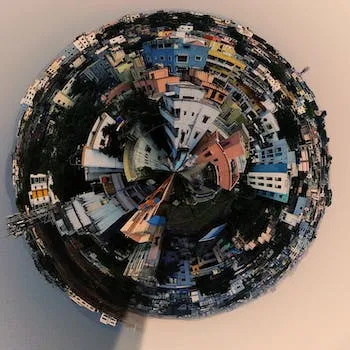-
Contents
“Unlock the Potential of AI: Discover How Curators are Impacted!”
The use of artificial intelligence (AI) is becoming increasingly prevalent in many aspects of our lives, from the way we shop to the way we communicate. But what about the art world? Are Curators being affected by AI? This article will explore how AI is impacting the role of Curators and how it may shape the future of the art world. We will look at how AI is being used to curate exhibitions, how it can help Curators make decisions, and how it can be used to create new forms of art. Finally, we will discuss the potential implications of AI on the role of Curators and the art world as a whole.
Exploring the Impact of AI on Curators: What Changes Can We Expect?

The impact of artificial intelligence (AI) on Curators is an increasingly important topic in the art world. As AI technology continues to evolve, it is becoming more and more capable of performing tasks that were once thought to be the exclusive domain of human Curators. This has led to a great deal of speculation about how AI will affect the role of Curators in the future. In this article, we will explore some of the potential changes that AI may bring to the field of curatorial work.
One of the most obvious changes that AI could bring to curatorial work is the automation of certain tasks. AI algorithms are already being used to automate mundane tasks such as cataloguing and archiving, freeing up time for Curators to focus on more creative aspects of their job. AI can also be used to generate recommendations for exhibitions and other projects, allowing Curators to quickly identify potential opportunities and make decisions more efficiently.
Another potential change is the increased use of data-driven decision making. AI algorithms can be used to analyze large amounts of data and generate insights that can help Curators make better decisions about which works to include in an exhibition or which artists to feature in a show. This could lead to more informed decisions and a greater understanding of audience preferences.
Finally, AI could also lead to a shift in the way that Curators interact with their audiences. AI-powered chatbots and virtual assistants could be used to provide visitors with personalized recommendations and information about exhibitions and other events. This could lead to a more engaging experience for visitors, as well as providing Curators with valuable feedback about their work.
Overall, it is clear that AI has the potential to significantly alter the way that Curators work in the future. While some aspects of curatorial work may become automated, it is likely that human Curators will still remain essential for making creative decisions and engaging with audiences. As AI technology continues to evolve, it will be interesting to see how these changes will shape the future of curatorial work.
How Will AI Change the Role of Curators in the Art World?
The advent of artificial intelligence (AI) is set to revolutionize the art world, and Curators are no exception. AI has the potential to drastically alter the role of Curators in the art world, from their responsibilities to their day-to-day tasks.
AI can be used to automate many of the mundane tasks that Curators are responsible for, such as cataloging and organizing artwork. This will free up time for Curators to focus on more creative aspects of their job, such as researching and selecting artwork for exhibitions. AI can also be used to analyze data about artwork, such as its provenance and market value, which can help Curators make more informed decisions when selecting pieces for exhibitions.
AI can also be used to create virtual exhibitions that can be experienced online. This could allow Curators to reach a much wider audience than ever before, as well as allowing them to experiment with new ways of presenting artwork. AI could also be used to create interactive experiences that allow viewers to explore artwork in new ways.
Finally, AI could be used to create personalized experiences for viewers. AI algorithms could analyze a viewer’s preferences and suggest artwork that they might like based on their past viewing habits. This could help Curators create more engaging experiences for viewers and encourage them to explore artwork they may not have otherwise considered.
Overall, AI has the potential to drastically change the role of Curators in the art world. By automating mundane tasks and creating new opportunities for experimentation and engagement, AI could help Curators reach a wider audience and create more meaningful experiences for viewers.
Examining the Potential Benefits and Challenges of AI for Curators
The potential benefits and challenges of artificial intelligence (AI) for Curators are worth examining. AI has the potential to revolutionize the way Curators work, allowing them to manage large collections more efficiently and effectively.
One of the primary benefits of AI for Curators is its ability to automate mundane tasks. AI can be used to automate cataloging, tagging, and other administrative tasks, freeing up Curators to focus on more creative aspects of their job. AI can also be used to analyze large datasets, helping Curators identify trends and patterns in their collections that may have otherwise gone unnoticed.
AI can also help Curators make better decisions about how to display their collections. By analyzing data from past exhibitions, AI can help Curators determine which pieces should be displayed together and which should be kept separate. This could lead to more engaging exhibitions that draw in larger crowds.
However, there are some potential challenges associated with using AI for curatorial work. One of the biggest concerns is that AI could lead to a homogenization of exhibitions, as algorithms may not take into account the nuances of individual pieces or the preferences of visitors. Additionally, AI systems require a significant amount of data in order to function properly, which may not always be available for certain collections. Finally, there is a risk that AI could lead to job losses as some tasks become automated.
Overall, while there are some potential challenges associated with using AI for curatorial work, the potential benefits far outweigh them. With careful implementation and oversight, AI could revolutionize the way Curators work and lead to more engaging exhibitions for visitors.
Q&A
1. How is AI impacting the role of Curators?
AI is changing the way Curators work by allowing them to access more data and information than ever before. AI can help Curators identify trends, analyze data, and make decisions faster and more accurately. AI can also help Curators create more engaging experiences for visitors by providing personalized recommendations and interactive experiences.
2. What are the benefits of using AI for Curators?
The use of AI for Curators can provide a number of benefits, including increased efficiency, improved accuracy, and better decision-making. AI can also help Curators create more engaging experiences for visitors by providing personalized recommendations and interactive experiences. Additionally, AI can help Curators identify trends and analyze data faster and more accurately.
3. Are there any potential risks associated with using AI for Curators?
Yes, there are potential risks associated with using AI for Curators. For example, if the data used to train the AI is biased or incomplete, it could lead to inaccurate results or decisions. Additionally, if the AI is not properly monitored or managed, it could lead to privacy concerns or other security issues.In conclusion, AI is having a significant impact on the role of Curators. AI technology is being used to automate many of the tasks that Curators traditionally performed, such as cataloging and organizing collections. AI can also be used to generate insights from large datasets, which can help Curators make more informed decisions about their collections. While AI may reduce the need for human Curators in some areas, it can also open up new opportunities for Curators to focus on more creative and strategic tasks. Ultimately, AI will continue to shape the role of Curators in the future.
If you’re curious about how AI is impacting the role of curators, take a look at this article from JobHuntMode.com! Learn more about how AI is changing the way curators work and how to stay ahead of the curve. Click here to read more!


